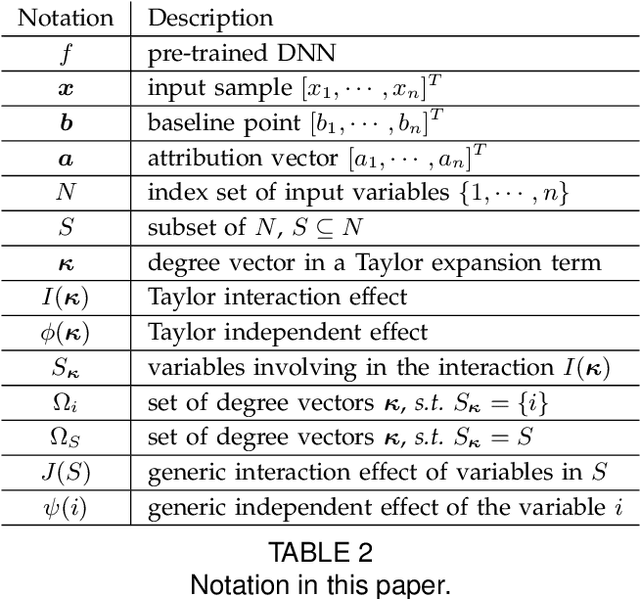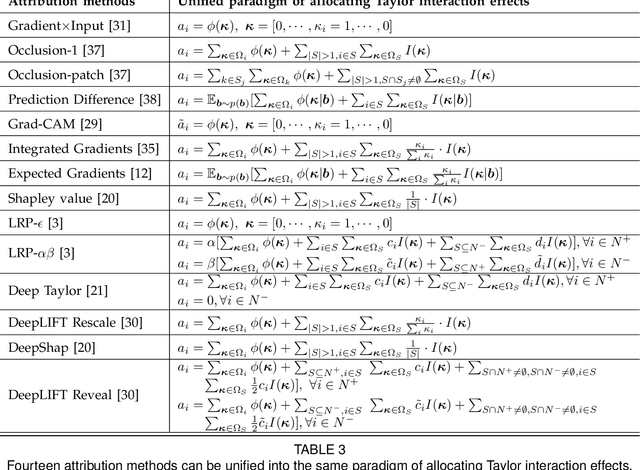Understanding and Unifying Fourteen Attribution Methods with Taylor Interactions
Paper and Code
Mar 06, 2023



Various attribution methods have been developed to explain deep neural networks (DNNs) by inferring the attribution/importance/contribution score of each input variable to the final output. However, existing attribution methods are often built upon different heuristics. There remains a lack of a unified theoretical understanding of why these methods are effective and how they are related. To this end, for the first time, we formulate core mechanisms of fourteen attribution methods, which were designed on different heuristics, into the same mathematical system, i.e., the system of Taylor interactions. Specifically, we prove that attribution scores estimated by fourteen attribution methods can all be reformulated as the weighted sum of two types of effects, i.e., independent effects of each individual input variable and interaction effects between input variables. The essential difference among the fourteen attribution methods mainly lies in the weights of allocating different effects. Based on the above findings, we propose three principles for a fair allocation of effects to evaluate the faithfulness of the fourteen attribution methods.
 Add to Chrome
Add to Chrome Add to Firefox
Add to Firefox Add to Edge
Add to Edge